Measuring progress
Learning objectives
|
This module will review the expected impact of your project and how you will report on this. After completing this module, you should be able to perform the following:
|
Presentation
| This presentation introduces the topic of how you will measure the progress of your project. This includes a review of the mandatory event, reporting milestones and capacity development indicators. |
Presentation transcript
Click to expand
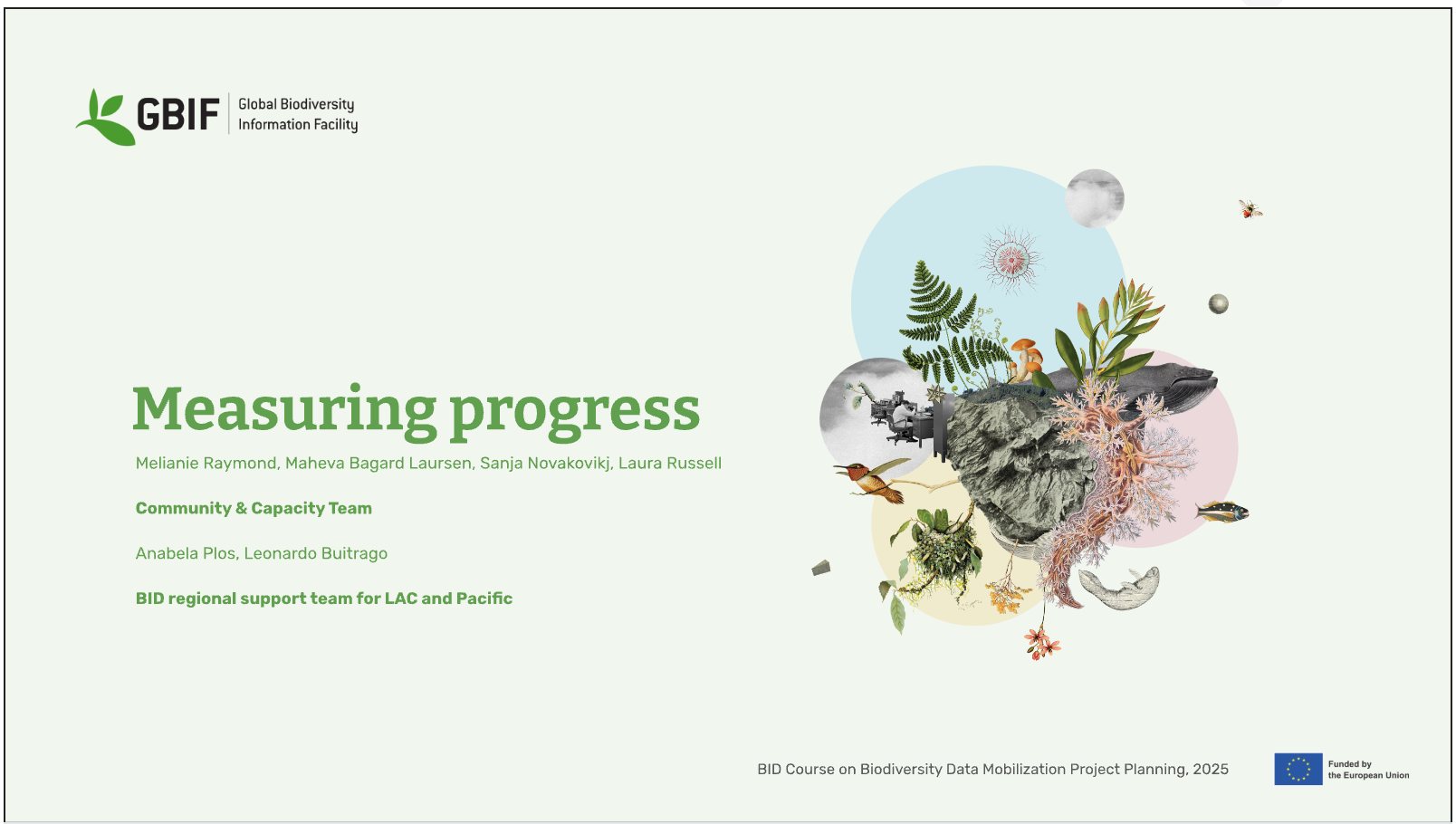
Slide 1 - Measuring progress
As part of your project overview, you included the expected outcome or impact of your project, here, how you will expect to monitor your project.
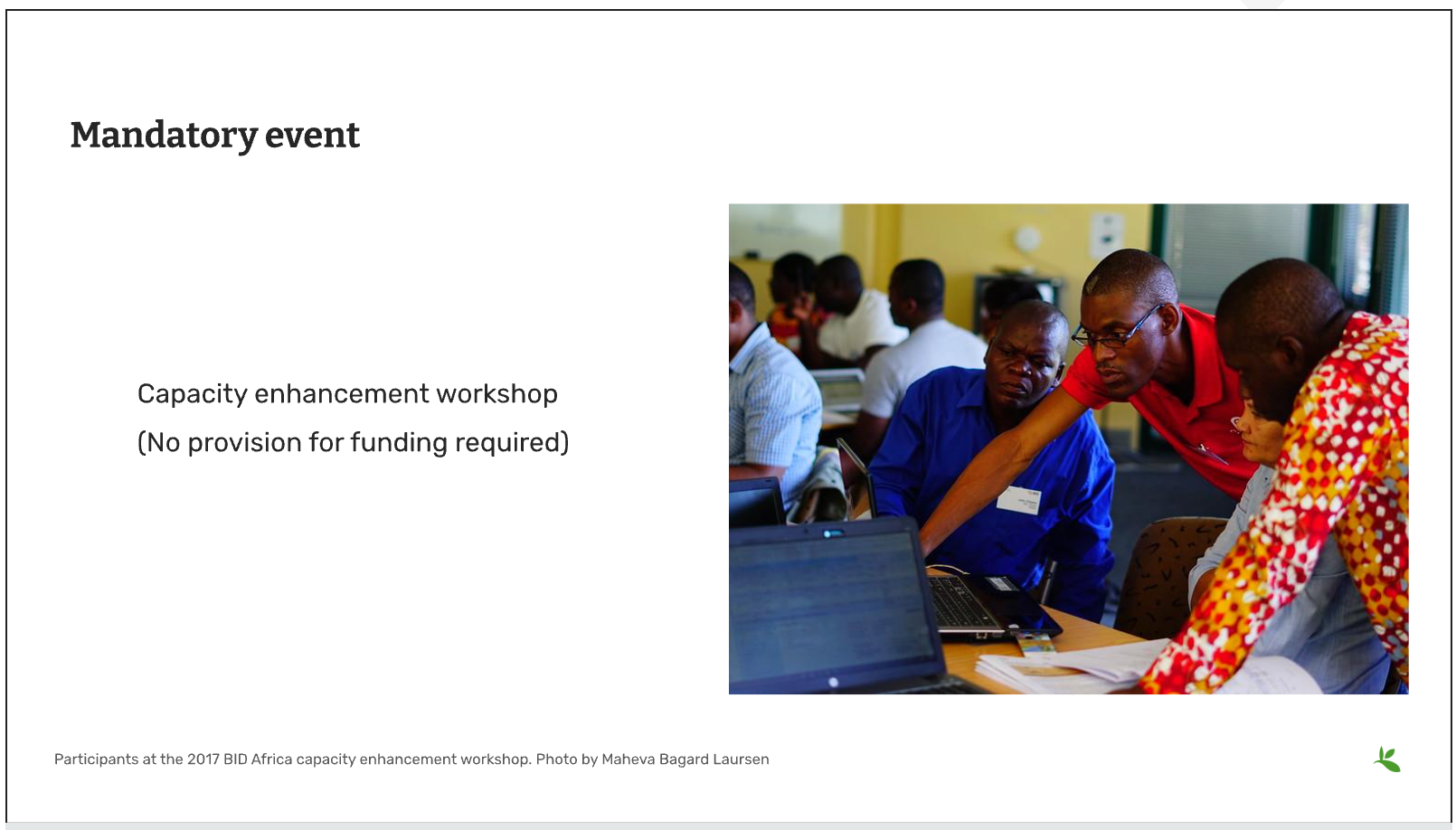
Slide 2 - Mandatory event
Each funded projects has a series of milestones and a mandatory event that must be met.
The first is an mandatory event to occur 2026. Attendance by a project team member is required at the BID Capacity enhancement workshop for the respective region of the funded project. Attendance and travel for this event is funded by the programme and not the project. This workshop is technical in nature and the Project Lead should identify the best person to attend the workshop. The workshop participant will be expected to earn the digital certification associated with the workshop and will be responsible for disseminating the knowledge gained during the workshop to the project’s stakeholders.
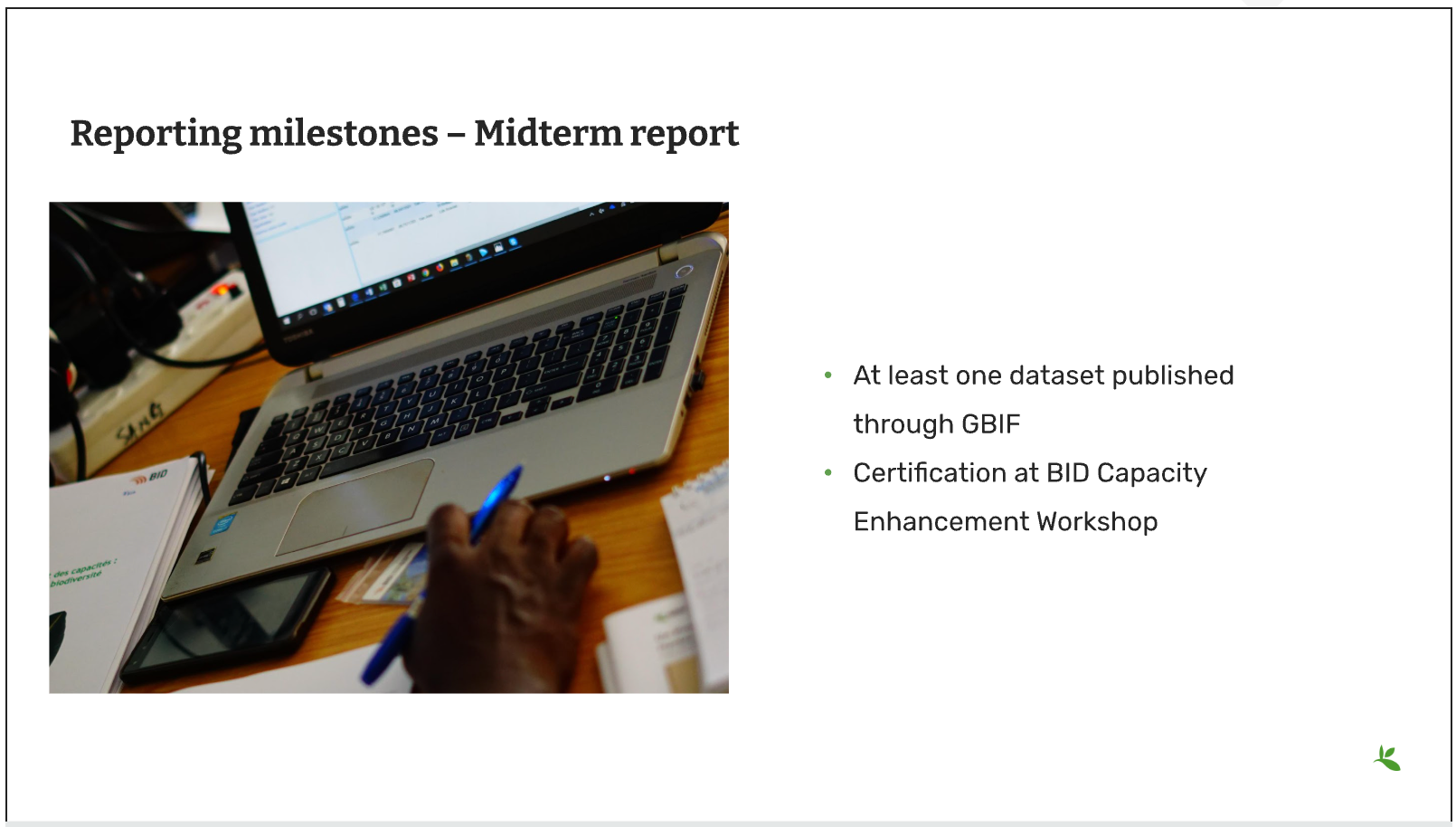
Slide 3 - Reporting mid-term milestones
Then there are mandatory milestones attached to phases of the project.
The following must be completed for the Midterm report:
-
Publication of at least one dataset through GBIF.org
-
Gain certification at BID Capacity Enhancement Workshop
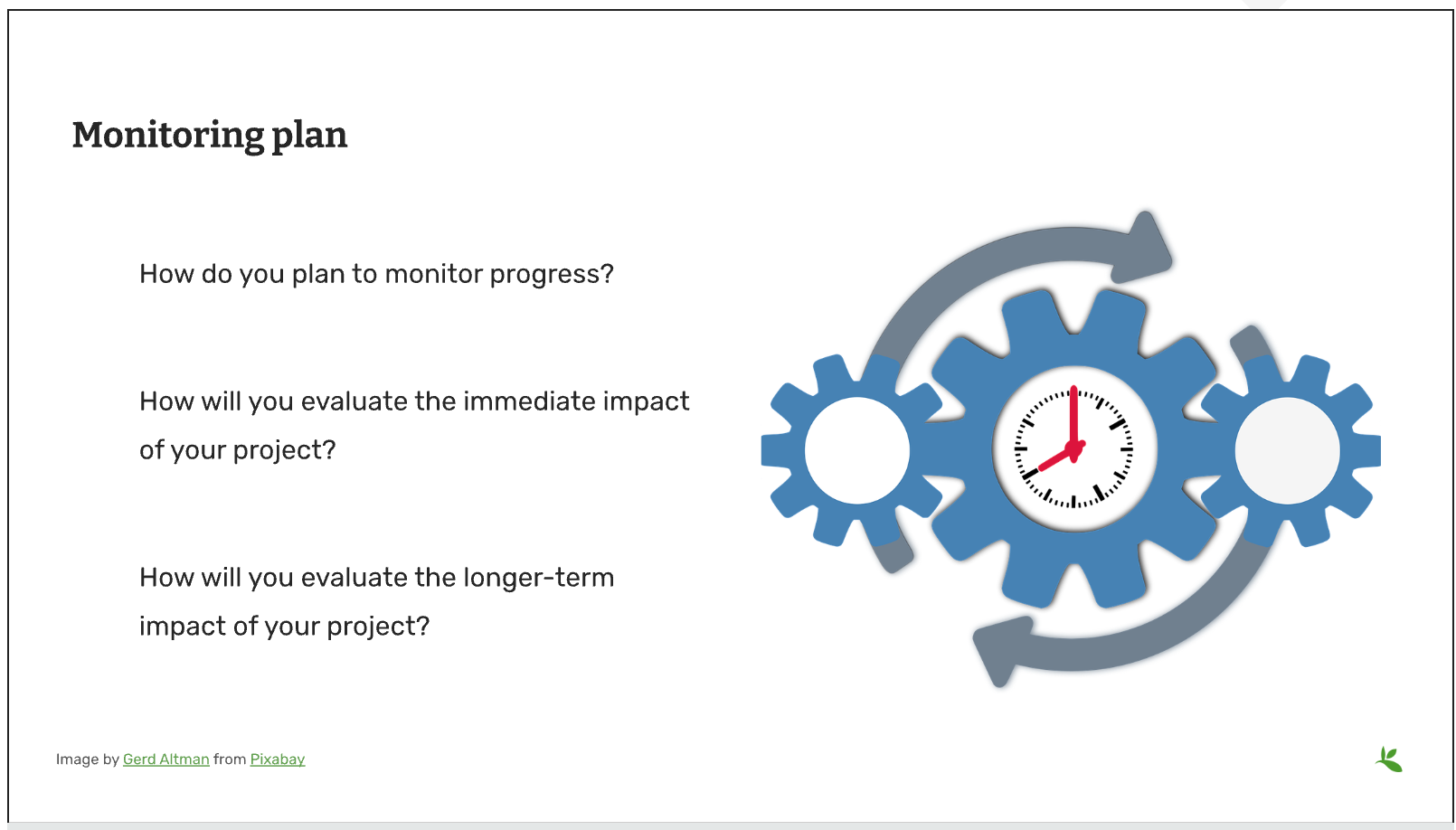
Slide 4 - Monitoring plan
In order to manage your timeline, it is important to define how you will monitor your progress. In this section of the proposal, you should describe:
-
How you plan to monitor progress/achievement of the stated objectives and implementation of planned activities and production of deliverables;
-
How you will evaluate immediate impact of your project;
-
How you will evaluate the longer-term impact of your project, for example 6-12 months after its completion.
The role of the indicators in your monitoring plan

Slide 5 - Mandatory indicators
As an additional measure of impact, you have…and should your project be funded you will be expected to report on the required indicators:
Mandatory binary indicators (Yes/No)
-
Data mobilized contribute to relevant goals and targets of Global Biodiversity Framework (GBF)
-
Data mobilized support policy-relevant information products
Mandatory quantitative indicators
-
Number of institutions represented in events organized by the project
-
Number of people trained by the project
-
Number of replication workshops organized by the project
-
Number of georeferenced species occurrence records published by the project
If it helps you to monitor progress you can add additional indicators, You will then be able to select any other relevant capacity development indicators that should be used to assess the impact of your project. You may select as many as applicable.
If your project is selected, you will be required to report on both the mandatory indicators and your chosen indicators in your midterm and final reports.
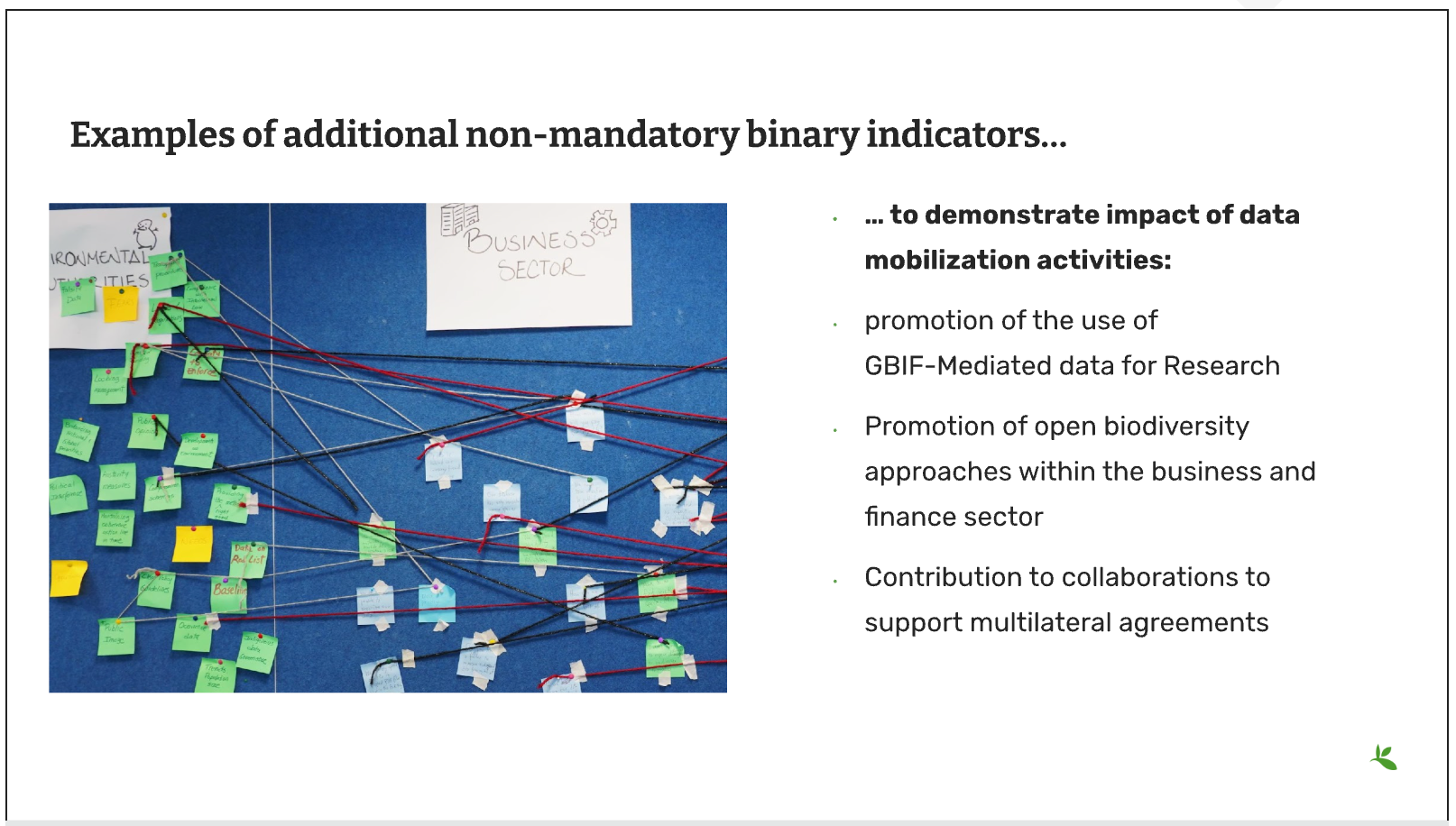
Slide 6 - Examples of additional non-mandatory binary indicators
Examples of additional non-mandatory binary indicators to demonstrate the impact of data mobilization activities:
BINARY
-
Promotion of the use of GBIF-Mediated data for Research
-
Contribution to the development of local, national, and/or regional policies relating to environment
-
Promotion of open biodiversity approaches within the business and finance sector
-
Contribution to establishing or strengthening collaborations to support the implementation of biodiversity-related multilateral environment agreements
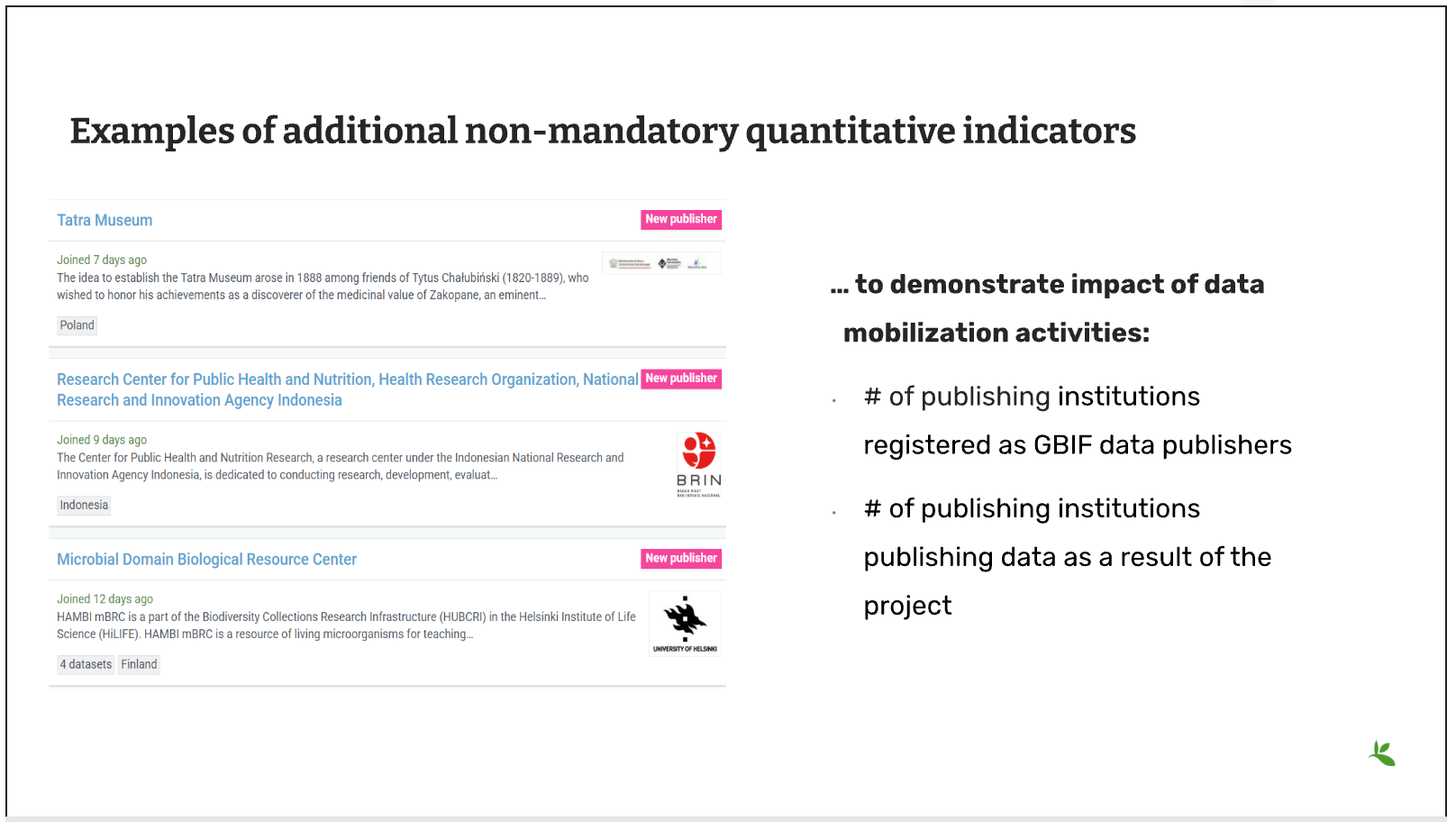
Slide 7 - Examples of additional non-mandatory quantitative indicators
Examples of additional non-mandatory quantitative indicators to demonstrate the impact of data mobilization activities:
-
Number of publishing institution registered as GBIF data publishers as result of the project
-
Number of data publishing institutions publishing data as a result of the project
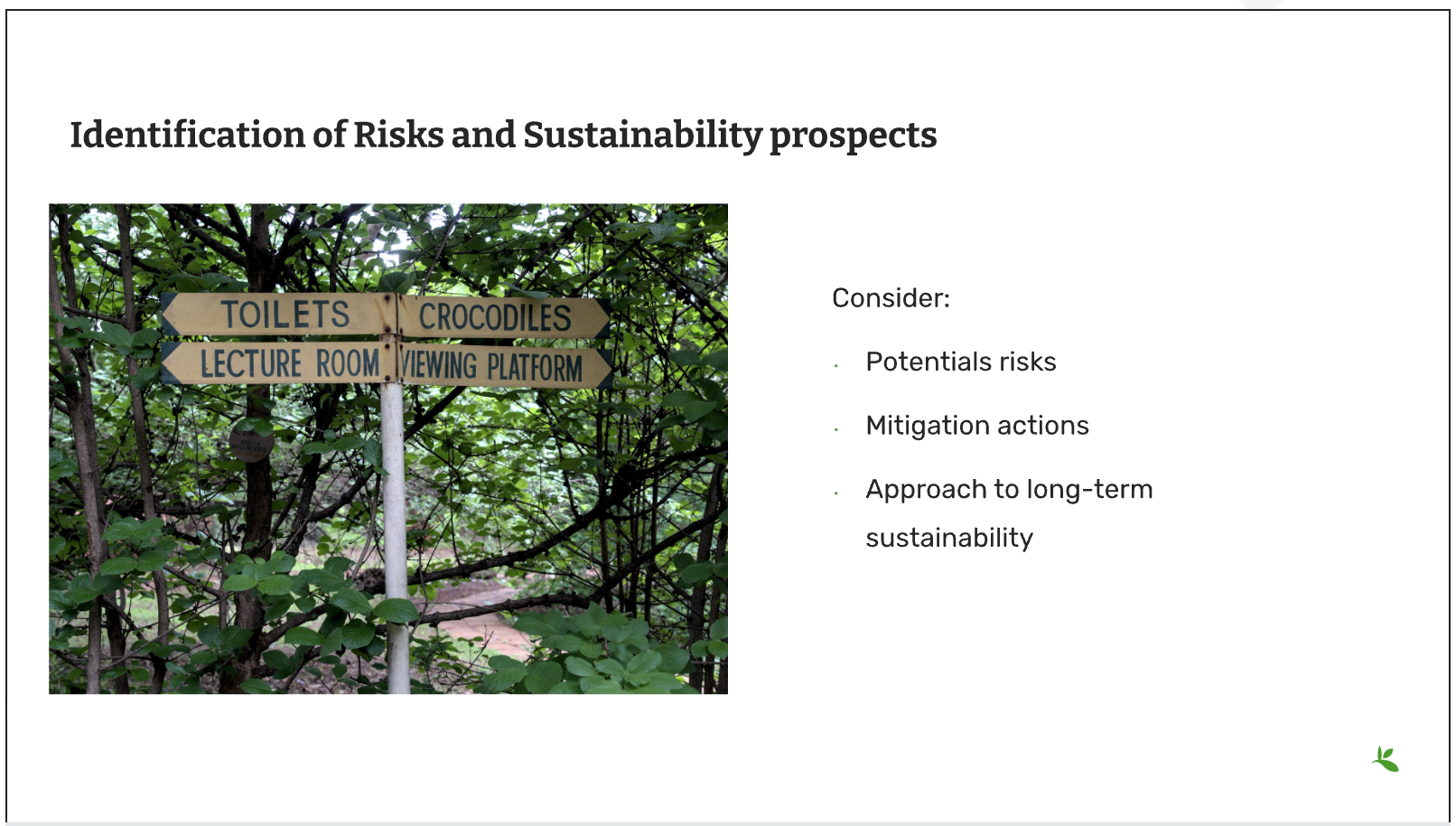
Slide 8 - Identification of risks and sustainability prospects
Lastly you will want to develop the section on sustainability prospects. You should explain the approach that will be taken to ensure the long-term sustainability of the project’s impact (i.e. how will you sustain the project and its impacts after the funding is complete). This section should include potential risks that may prevent the successful realization of the project objectives and the details to possibly mitigate the risk.
The identification of risks is an important step to assess and control areas of uncertainties and improve the chances of a project to succeed.
Mitigation strategies can be identified by answering questions such as; is there any possibility to:
-
Avoid the risk? If so, how?
-
If not, is it possible to Reduce the risk and its impact on the project?
-
How can we Manage the risk?
-
What are the processes we can implement to reduce the probability of the risk happening?
-
How can we downsize its overall impact on the project?
-
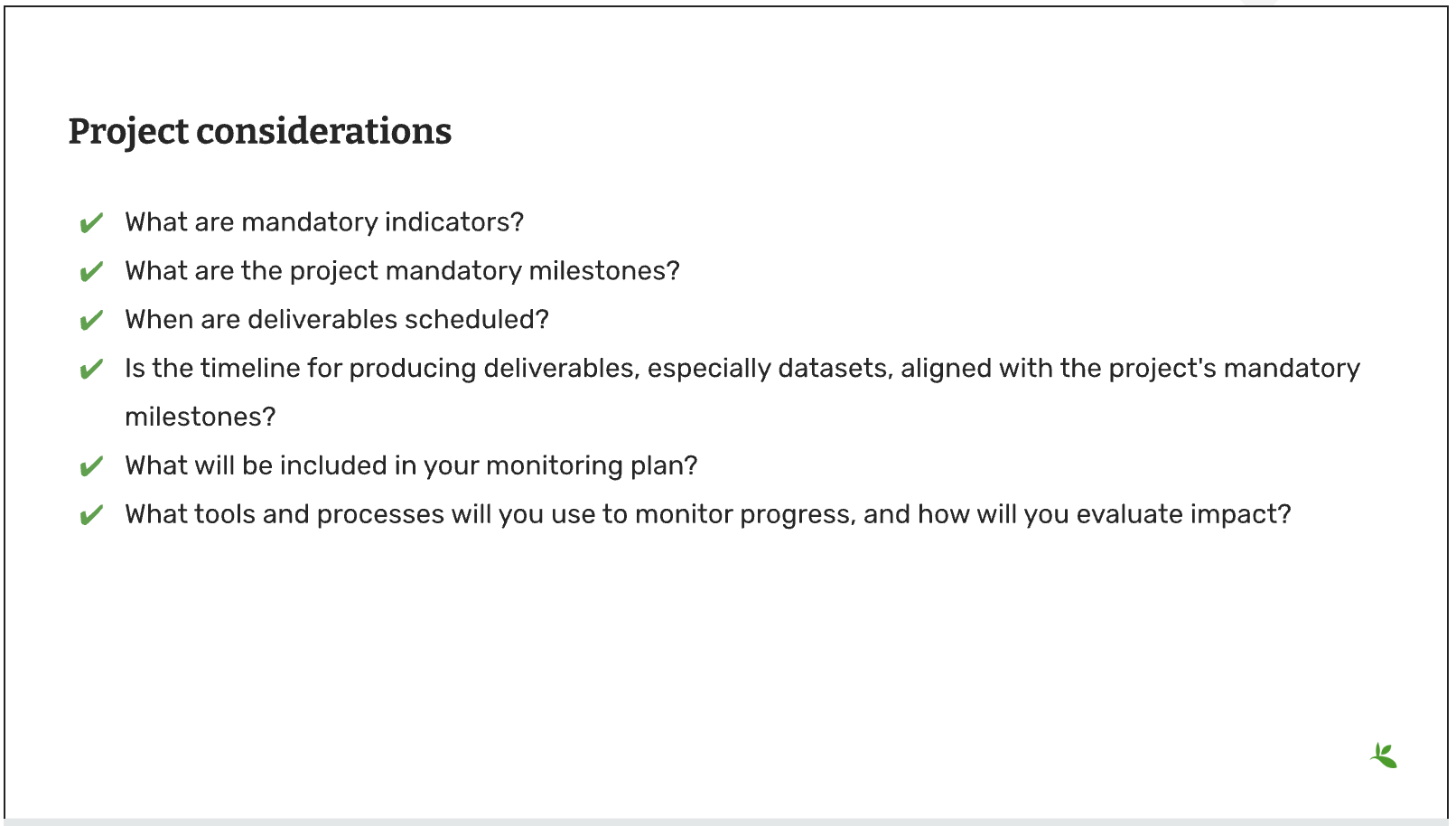
Slide 9 - Project considerations
When you finish your proposal would should be able to answer these questions.
-
What are mandatory indicators?
-
What are the project mandatory milestones?
-
When are deliverables scheduled?
-
Is the timeline for producing deliverables, especially datasets, aligned with the project’s mandatory milestones?
-
What will be included in your monitoring plan?
-
What tools and processes will you use to monitor progress, and how will you evaluate impact?

Slide 10 - Thank you
Activity
| Using Mentimeter, rearrange the activity steps in a logical workflow. |
Instructions
-
Go to the poll on Mentimeter
-
Move the activities from the bottom list up to the gray box at the top.
-
Rearrange the activities in a logical workflow.
-
Return here to see the results
Suggested activity solution
Click to expand
Suggested grouping of the activities. Depending on your project situation, you might suggest different groupings/timings.
Before
-
Identification of the resources needed for data mobilization activities
-
Securing the resources needed for data mobilization activities
-
Informing the relevant GBIF node of the project data mobilization activities
-
Securing agreement of the data holder(s) to share the data
*During
-
Training of staff involved in data mobilization activities
-
Determination of processes to accommodate long-term curation of the data shared through GBIF
-
Pre-data mobilization curation efforts
-
Identification of data-hosting facilities
-
Identification and registration of the GBIF data publisher
End
-
Publication of the data through GBIF
| Publication of data is something that we encourage you to start early, especially as your first dataset is a midterm reporting milestone, and then continue to publish datasets throughout the duration of your project. Of course, some datasets naturally won’t be ready for publication until nearer the end of the project. |